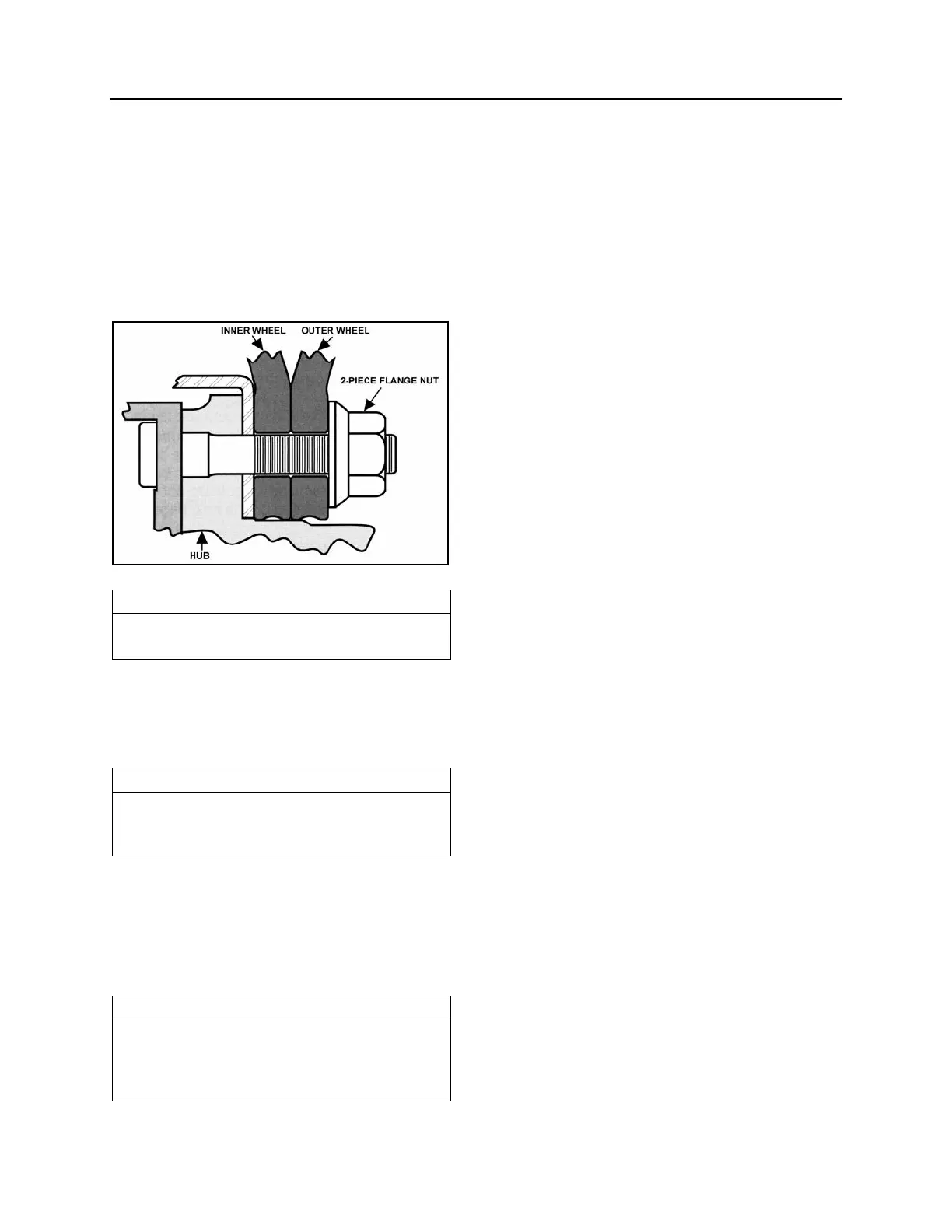Section 13: WHEELS, HUBS & TIRES
PA1553
6
7. HUB MOUNTED WHEELS
Wheel surfaces in contact with hubs, nuts or
other wheels should be kept free of all rust,
grease and paint (except for initial “E” coat
protection, applied to stop rusting and to
facilitate wheel removal). The reason for this is
to assure that all faces are clamped together
without buildup of any coating. The threads of
the wheel studs and the wheel nuts should be
clean and undamaged.
FIGURE 5: HUB-MOUNTED WHEELS 13025
NOTE
When painting wheels, make sure to mask all
surfaces identified above.
Using a calibrated torque wrench, tighten wheel
nuts to 450 - 500 lbf-ft (610 - 680 Nm) of torque.
Do not use power tools or long bars for
tightening. Tighten wheel nuts alternately as
shown in figure 2.
NOTE
Tightening should not be done immediately
after prolonged braking or when wheel ends
are hot.
Check wheel nut torque at every 100 miles (160
km) for 500 miles (800 km) after fitting wheels.
Let cool before checking. If any relaxation of the
initial 450 - 500 lbf-ft (610 - 680 Nm) of torque
has occurred, retighten. Relaxation of initial
torque may occur because of the “bedding
down” of the hub and wheel surfaces.
NOTE
Torque relaxation occurs when wheel ends
are hot but should revert to original setting
when cool. Retightening when hot will produce
a higher torque reading than recommended.
7.1 CARE OF WHEELS
Check for cracks in wheels, especially around
the fixing holes, studs, nuts and washers. If in
doubt, renew.
Do not simply retighten very loose wheel fixings
or wheels that are continually becoming loose.
Find out why they are loose and whether any
damage has been caused.
Use trained personnel and keep records of all
attention to wheels and fixings, including which
parts were renewed and when.
8. FRONT AND TAG AXLE WHEEL HUBS
The unitized hub bearings used on the NDS
range of axles, are non-serviceable items.
Bearings are pre-adjusted, lubricated and have
seals fitted as part of the manufacturing process.
The bearings are greased for life and there is no
need or facility for re-lubrication
8.1 HUB BEARING INSPECTION
An inspection should be made at intervals of
30,000 miles (48 000 km).
o Apply parking brake, raise wheels off the
ground and support axle on stands. When
the wheels are raised, they should revolve
quite freely without roughness.
o Place magnetic base of a dial indicator on
brake caliper and position dial indicator stem
against a convenient marked spot on face of
hub flange.
o With dial indicator in position pull hard but
steadily on hub flange and oscillate at same
time until a steady reading is achieved.
o Without releasing the pressure, turn bearing
so that dial indicator stem contacts marked
spot and note reading on indicator.
o Push bearing flange hard and oscillate as
before until a steady reading is achieved.
o Without releasing the pressure, turn bearing
so that indicator stem again contacts the
marked spot and note new reading on
indicator.
o The difference between readings is the
amount of mounted end play in bearing unit.
o The mounted end play figure should not
exceed 0.050 mm for a new bearing.

